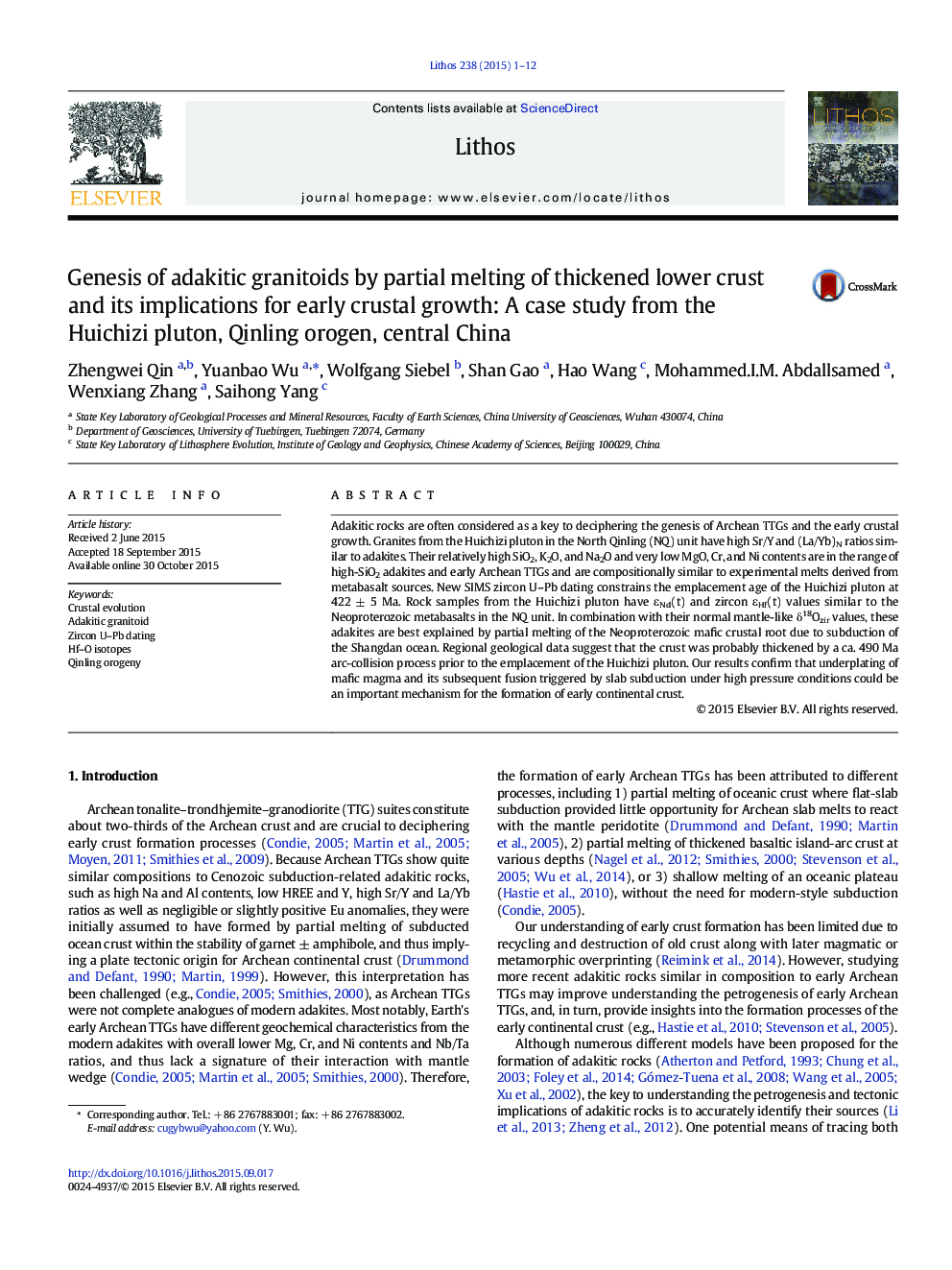| Article ID | Journal | Published Year | Pages | File Type |
|---|---|---|---|---|
| 6440537 | Lithos | 2015 | 12 Pages |
Abstract
Adakitic rocks are often considered as a key to deciphering the genesis of Archean TTGs and the early crustal growth. Granites from the Huichizi pluton in the North Qinling (NQ) unit have high Sr/Y and (La/Yb)N ratios similar to adakites. Their relatively high SiO2, K2O, and Na2O and very low MgO, Cr, and Ni contents are in the range of high-SiO2 adakites and early Archean TTGs and are compositionally similar to experimental melts derived from metabasalt sources. New SIMS zircon U-Pb dating constrains the emplacement age of the Huichizi pluton at 422 ± 5 Ma. Rock samples from the Huichizi pluton have εNd(t) and zircon εHf(t) values similar to the Neoproterozoic metabasalts in the NQ unit. In combination with their normal mantle-like δ18Ozir values, these adakites are best explained by partial melting of the Neoproterozoic mafic crustal root due to subduction of the Shangdan ocean. Regional geological data suggest that the crust was probably thickened by a ca. 490 Ma arc-collision process prior to the emplacement of the Huichizi pluton. Our results confirm that underplating of mafic magma and its subsequent fusion triggered by slab subduction under high pressure conditions could be an important mechanism for the formation of early continental crust.
Related Topics
Physical Sciences and Engineering
Earth and Planetary Sciences
Geochemistry and Petrology
Authors
Zhengwei Qin, Yuanbao Wu, Wolfgang Siebel, Shan Gao, Hao Wang, Mohammed.I.M. Abdallsamed, Wenxiang Zhang, Saihong Yang,
